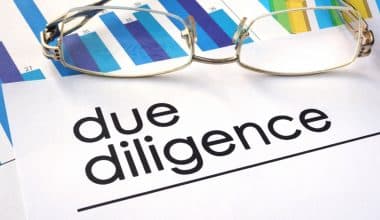A good resume shows off your skills and puts you in a position to be successful in your career. Here’s a full explanation of what a resume for a job is, its examples, how to write one, and how to make a resume for your first job.
What Is a Resume for a Job
The word “resume” comes from the French language, and it means “summary.” Even now, the aim of a resume for a job is still to give a summary of your relevant skills to potential employers.
A resume for a job, which can also be written as a résumé, is a formal document that shows a person’s work history and skills. Most of the time, a resume is made to help a job candidate get a new job. A typical resume has sections for a professional summary, work history, and education. It works like your job-hunting marketing document. A resume should only be one or two pages long, according to American job coaches. Traditionally, British job seekers are expected to submit a little more thorough document known as a CV (curriculum vitae).
If you’re applying for a job, you must write and submit a resume in order to be considered. A resume is comprised of the five parts listed below:
How to Write a Resume
Every job advert gets about 250 applications*, so if you want to be one of the few people who get a call back for an interview, you’ll need to do more than just fill your resume with your best skills and most amazing career achievements. Our detailed, step-by-step resume guide will show you how to write a resume from scratch and make a resume with all the sections you need to highlight your unique strengths.
#1. Contact Section
In this section, you write your name, last name, address, email address, and phone number, which should be at the top of your resume. If you don’t want to give your home address, you can just give your city and state. Depending on the job you are applying for, you may also want to include your social media accounts, blog, or website. Your contact details must be distinct from the rest of your resume so that prospective employers don’t have to look for them. You can make your contact information stand out by making it bold or bigger than the rest of your resume.
Example
- Provide the following contact information:
- Name: Add your first and last name.
- Phone number: Your cellphone number is the finest option for recruiters to readily reach you.
- Email: Make sure it’s suitable, simple, and clear of aliases. Unprofessional email addresses account for 35 % of the most prevalent resume errors, which are discussed below.
- Location: Please specify your city and state of residence.
#2. Resume Profile, Objective, or Summary
After your contact information, you can write a resume profile, objective, or summary, depending on what you want to do and what you are good at. In a broad sense, these can be beneficial if they describe your immediate job goal in a brief way, but they are not necessary for a good resume. You might want to start your job search or cover letter with an objective or summary.
Resume Profile
A resume profile is a short summary of your skills and experience that are relevant to the job you want. If you changed your profile every time you applied for a new job, that would be helpful.
Resume Objective
Another optional part of a resume is the objective, which is different for each job you apply for. An objective tells a potential employer a little bit about what you want to do with your job
The following is a formula for writing a resume objective:
[Your profession] plus [degree or experience and top skills] seeking [a job position and firm] to [achieve your goals] with [professional abilities and knowledge specified in the job description]. [Include two or three soft skills in addition to any other qualifications.]Example of a resume objective: “To obtain a marketing manager position at a respectable organization where I can utilize my marketing expertise and talents.“
Resume Summary
This part of your resume is optional. It can be one to two sentences or a list of your best skills, experiences, and accomplishments that relate to the job you want. Your resume summary could include things like the number of years you’ve worked in a certain job or industry, the skills you have that are needed for the job, and any specific accomplishments that show you are qualified for the job.
Formula to writing a resume summary
[Professional soft skills] plus [job description and years of work experience] in [expertise area specified in the job description] Competent in [two or three of your most valuable, job-related hard skills]. [An impressive career achievement and any other abilities or credentials.]Resume summary examples
Graphic designer resume summary:
“Creative graphic designer with seven years of expertise developing brand identities for more than fifteen companies. skilled in logo typography and the design of color palettes with Adobe InDesign, Illustrator, and After Effects. We made an augmented reality (AR) visuals for a mobile smartphone game application with a 2 million-person audience.”
#3. Experience
In the experience section of your resume, you should write all of the work and other experience you have that is relevant to the job you want. Include the companies you’ve worked for, the job titles you’ve held, and the duties of each job. You can also list any important accomplishments or awards you’ve won at previous jobs.
If you’ve worked at more than one job, only include the last 10 to 15 years in this section. If you just graduated, you can also list internships and jobs you had over the summer. Don’t forget to write your job descriptions in the past tense for jobs you’ve had in the past and in the present tense for jobs you’re still doing.
Example
Manager of Social Media for ABC Business, Feb. 2023-Present
- Direct and manage social media efforts, including Twitter, Instagram, and Facebook.
- Enhance consumer relationships by monitoring your company’s internet appearance and branding
- Using new promotion strategies resulted in a 30% increase in online traffic.
- Use social media analytics instruments to track customer involvement.
#4. Education
The education part of your resume is also important. In this part of your resume, you write about your education and any academic accomplishments or accolades you have won. Also include the name of the university you went to, the degrees you earned, and any honors or awards you received. If you just finished high school, you may also include that information.
Examples of education section components:
- Program name: Bachelor of Arts English n
- Name of the University: Ohio State University
- Location: Columbus, Ohio.
- Dates of Graduation or attendance: Class of 2016; August 2015 – December 2019
#5. Skills
In this part of your resume, you can mention the skills that are relevant to the job you want. In this section, you could list computer skills, technical skills, and personal skills that are important for the job. You can use the job description to figure out what skills to put on your resume
Example
Important skills include:
- Data analysis
- SEO/SEM advertising
- Content marketing
How to Make a Resume for First Job
Many jobs advertised ask for experience in the field. But not having a job before doesn’t mean you don’t have any experience. Your experience comes from a place other than work. For your first job, your resume should focus on your academic accomplishments and any unpaid work, volunteer work, or extracurricular activities you’ve done
Here are some tips to follow to make a resume for your first job.
#1. Pick the Right Layout.
The majority of resumes consist of work histories, usually presented in reverse chronological order. Use a resume structure that places emphasis on your education rather than your work history if you lack relevant work experience to offer.
#2. Match Your Experiences to the Job Listing.
Start writing a good resume by reading the job description for the position you want. You want your resume to match what the company wants, so make a list of the most important words from the job description.
Read through the job description and write down or underline all the skills, abilities, and values it lists. Pay special attention to the ones that say “required.”
Now, think about things you’ve done in your life that are similar to the things on the list. If the job description asks for someone with good organizational skills, think about times when you had to be very organized. You may have helped plan an event at school or been in charge of a group project.
You don’t have to have something for every item. Keep this list close by when you start filling out your resume template.
#3. Concentrate on Your Studies.
You may find it useful to begin your resume with the education section. Provide your school and attendance dates, as well as:
- Relevant coursework: Have you completed classes that are relevant to the job you’re looking for (or those you discovered when researching job descriptions)? Make certain to list them.
- GPA: A strong GPA (typically 3.5 or higher) can demonstrate to potential employers that you have the necessary skills and work ethic to be successful on the job.
- Academic accomplishments: Provide anything else that displays your intellectual aptitude, such as earning the dean’s list or joining the National Honor Society.
- Extracurricular activities: Highlight the activities that correspond to the job description. Participation in student council, for instance, could show leadership, collaboration, and problem-solving abilities. Also, Participating in a team sport demonstrates collaboration and time management skills.
- Certifications and online courses: If you have completed any training, boot camps, courses, or certification programs outside of school, please list them here.
If you are still enrolled in a program, indicate “in progress” and include your expected graduation date.
#4. Highlight Volunteer Work and Extracurricular Activities.
Next, add a section about your past work. Even if you don’t have official job experience, you can include any volunteer work, community activities, internship programs, or unofficial work experience (like tutoring, blogging, or helping with a family business) that is relevant to the job.
Refer to the list you made in Step 2 as you fill out this part. You don’t have to include everything. Instead, focus on your experiences that match terms that are higher up in the job description or those that are mentioned as required rather than preferred.
#5. List Your Human and Technical Skills.
Include a list of skills as bullet points in your resume. This list should include both your human skills and any technical skills users may have.
The skills you list on your resume should match those in the job description. Include your level of expertise in technical skills. For example, if you’re still learning a skill, you could say, “Familiar with Excel spreadsheets.”
It’s fine if you don’t have a long list of technical skills. A study from the job site LinkedIn found that 80 percent of companies want candidates with better workplace or human skills, which can be harder to teach. According to LinkedIn, the top five skills that people will need in 2020 are:
- Emotional intelligence
- Persuasion
- Adaptability
- Collaboration
- Creativity
#6. Write Your Resume Objective.
This short statement about your skills should go at the top of your resume. Most of the time, it’s best to write this last, when you know more about what’s in your resume. Keep it to one or two sentences that explain who you are, what you want, and what you can offer the employer.
Tips for Writing Your First Resume
Now that most of your resume is done, here are some tips to make it stand out:
- Keep it to one page. This is certainly relevant if you don’t have any work experience to put on your resume. Leave out everything that isn’t related to the job.
- When you talk about your skills and experiences, use action verbs. Try starting sentences with action words (e.g. designed, guided, led, improved, established, managed).
- Use the same words and phrases that were in the job description. A lot of companies use something called an applicant tracking system (ATS) to sort applications by keywords. If you use the same words and phrases as the job description, your resume might be more likely to stand out.
- Customize your resume for each job. The keywords and requirements for each job posting will be different. You don’t have to start from scratch every time, but make sure your resume is tailored to each job you apply for.
- Proofread. Make sure there are no spelling, grammar, or punctuation mistakes on your resume. Ask a friend or family member to help you proofread if you can.
- Include your full name, phone number, and email address so people can reach you.
What Should Be Included in a Resume?
The most important components of a resume are contact information, resume summary, career experience, abilities, and education. You can add more features like languages and certifications.
- Header containing contact information.
- Resume Profile: Resume Summary or Objective.
- Work Experience.
- Education.
- Skills.
- Additional Section.
Do Jobs Prefer CV or Resume?
A resume is the best way to apply for most jobs in the United States. You just want to provide a reason for the possible employer to interview you. When applying for positions in academia, research, science, and medicine, a CV may be required rather than a resume.
How Many Pages Should a Resume Be?
The average length of a resume should be between one and two pages. But some are at least three pages long.
How Do I Make a Resume on My Phone?
- How to construct a Resume on a mobile device
- Install the proper software. Install the application that you will use to write your Resume…
- Use a Resume template.
- Examine the file name
- Using Google Docs on the iPhone
- Word document from the iPhone
- Accessing Google Docs on Android
- Word document from Android.
What Is Best Resume Format?
The best resume format for the majority of job-seekers in 2023 is the reverse-chronological format. This resume format entails listing your resume information (such as your work experience and education) in reverse chronological order, beginning with your most recent employment, degree, or qualification.
References
Related Articles
- HOW TO MAKE A GOOD RESUME: Tips on Writing an Effective Resume
- 53+ Hard Skills And How To Highlight Them On A Resume
- RESUME WRITING: What It Should Look Like and Easy Guide to Make One
- LIST OF THE TOP ESSENTIAL SOFT SKILLS FOR RESUME IN 2023 (+ Free Tips)
- Top 33+ Resume Action Words To Make Your Resume Irresistible






